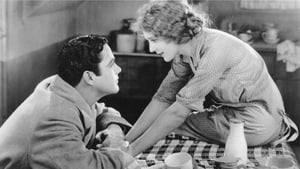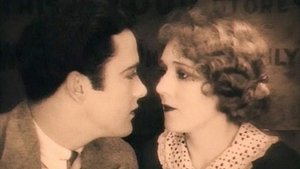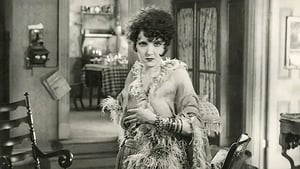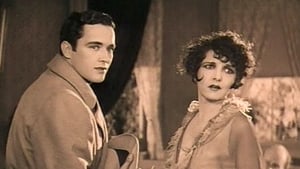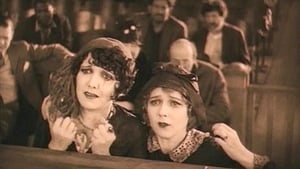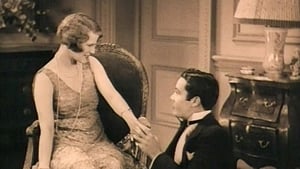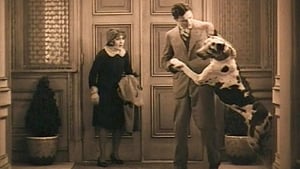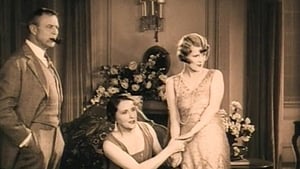Contact: info@alwanfilm.com
Video Sources 0 Views
- My Best Girl 1927
Synopsis
Table of Contents
ToggleReview: My Best Girl 1927 Colorized – A Timeless Romantic Comedy in Vibrant Color
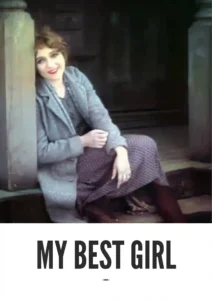
Introduction
“My Best Girl” (1927) is a classic romantic comedy that captures the charm and innocence of the silent film era. This early colored film version breathes new life into a beloved story, bringing its delightful characters and heartwarming romance to a new generation. In this article, we will explore the impact of colorization on the viewing experience of “My Best Girl” (1927) and discuss its importance in the context of film history.
Check The Full Colorized Movies List
Check Our Colorized Movies Trailer Channel
Understanding My Best Girl 1927 Colorized: Director, Cast, and Genre
Directed by Sam Taylor, “My Best Girl” (1927) showcases his expertise in crafting lighthearted, emotionally resonant narratives. The film stars Mary Pickford, the quintessential “America’s Sweetheart,” and Charles “Buddy” Rogers, whose chemistry together defines the film’s enduring appeal. As a romantic comedy, “My Best Girl” (1927) combines humor, charm, and genuine emotion, making it a timeless favorite.
Exploring the World of My Best Girl 1927 Colorized: Plot and Characters
At its heart, “My Best Girl” (1927) is a tale of love and social disparity. The film follows the story of Maggie Johnson (Mary Pickford), a cheerful and hardworking stock girl in a department store, and Joe Grant (Charles “Buddy” Rogers), the store owner’s son working incognito in the stockroom to learn the business from the ground up. Their romance blossoms amidst misunderstandings, class differences, and the hustle of city life.
Key moments include Maggie’s initial annoyance at Joe’s apparent incompetence, their gradual friendship and budding romance, and the eventual revelation of Joe’s true identity. Supporting characters such as Maggie’s eccentric family and Joe’s wealthy, disapproving parents add depth and humor to the narrative, making “My Best Girl” a rich tapestry of human relationships.
The Art of Film Colorization
Film colorization involves digitally adding color to black and white footage, enhancing the visual appeal and making classic films more accessible to contemporary audiences. This process, which has evolved significantly over the decades, aims to preserve the original artistry while offering a new perspective. By employing careful attention to historical accuracy and artistic integrity, colorization transforms classic films into vibrant works that can attract new viewers.
Early Colored Films: A Brief History
The journey of colored films began with experimental techniques like hand-tinting and toning in the early 20th century. The development of Technicolor in the 1920s and 1930s marked a significant advancement, allowing for more realistic and vivid color reproduction. Early color films captivated audiences with their visual splendor, paving the way for the widespread adoption of color in cinema. The process of film colorization, which emerged later, aimed to bring the same vibrancy to black and white classics, ensuring their continued relevance and appeal.
My Best Girl 1927 Full Movie and Its Early Colored Version
The decision to release “My Best Girl” (1927) in a colorized format was met with enthusiasm and curiosity. While purists often prefer the original black and white versions for their historical authenticity, the colorized edition of “My Best Girl” offers a fresh visual experience. The colorization process highlights the film’s charming period details, from the bustling department store to the characters’ fashion and surroundings, adding a new dimension to the viewing experience.
The Debate Over Film Colorization
Film colorization remains a contentious topic among cinephiles and critics. Proponents argue that colorization makes classic films more appealing to younger audiences and helps preserve these cultural treasures for future generations. Critics, on the other hand, contend that colorization can distort the original artistic vision and compromise the film’s historical integrity. The debate highlights the ongoing tension between preserving cinematic heritage and adapting to contemporary tastes.
Examining My Best Girl 1927 as an Early Colored Film
The colorization of “My Best Girl” (1927) enhances its visual storytelling by adding depth and vibrancy to the film’s settings and characters. The colorful depiction of the bustling department store and the varied costumes brings a new layer of realism and charm to the story. For some viewers, these visual enhancements deepen their emotional connection to the film, while others might feel that the original black and white aesthetic better captures the era’s essence.
Influence and Legacy: My Best Girl 1927 Colorized’s Impact on Cinema
“My Best Girl” (1927) has had a lasting impact on the genre of romantic comedy and the broader landscape of cinema. Its success helped solidify Mary Pickford’s status as a cinematic icon and showcased the potential of romantic narratives in silent films. The film’s influence can be seen in subsequent romantic comedies that draw on its themes of love transcending social barriers and the endearing qualities of its characters.
Director’s Cinematic Legacy: Beyond My Best Girl 1927 Colorized
Sam Taylor’s directorial legacy extends beyond “My Best Girl” (1927), with a body of work that spans various genres and styles. Known for his collaborations with comedic talents like Harold Lloyd and his ability to blend humor with heartfelt storytelling, Taylor’s films have left a significant mark on early Hollywood cinema. His influence continues to be felt in the works of directors who prioritize character-driven narratives and emotional depth.
Themes Explored in My Best Girl 1927 Colorized
“My Best Girl” (1927) explores several timeless themes, including the power of love to bridge social divides, the importance of authenticity and kindness, and the resilience of the human spirit. Through Maggie and Joe’s journey, the film highlights the transformative potential of love and the value of staying true to oneself. These themes resonate across generations, ensuring the film’s enduring relevance and appeal.
Reception and Controversy Surrounding My Best Girl 1927 Colorized
Upon its release, “My Best Girl” (1927) was met with widespread acclaim for its charming performances and heartfelt narrative. Critics and audiences alike praised Mary Pickford and Charles “Buddy” Rogers for their chemistry and comedic timing. The film’s colorized version, however, sparked controversy among purists who felt that the addition of color altered the film’s original aesthetic. Despite these debates, the colorized version succeeded in introducing the film to a broader audience and reaffirming its status as a beloved classic.
Where to Watch My Best Girl 1927 Colorized Online
For those eager to experience the magic of “My Best Girl” (1927), the film is available on popular streaming platforms such as Netflix, Amazon Prime, and Hulu. Whether you choose to watch it in its original black and white format or the early colored version, “My Best Girl” (1927) promises to enchant and entertain with its timeless tale of love and laughter.
FAQs About My Best Girl 1927 Colorized
Q: Is “My Best Girl” (1927) based on a true story? A: No, “My Best Girl” (1927) is a fictional romantic comedy crafted by screenwriter Allen McNeil. It is not based on any true story but rather a charming tale created to entertain and delight audiences.
Q: Who are the main actors in “My Best Girl” (1927)? A: The main actors in “My Best Girl” (1927) are Mary Pickford, who plays the spirited and hardworking Maggie Johnson, and Charles “Buddy” Rogers, who portrays Joe Grant, the department store owner’s son working incognito. Their on-screen chemistry and captivating performances are central to the film’s enduring appeal.
Q: What awards did “My Best Girl” (1927) win? A: “My Best Girl” (1927) did not win any major awards, but it was widely praised by critics and audiences alike. The film’s success helped solidify Mary Pickford’s reputation as one of the greatest actresses of the silent era and remains a cherished classic.
Q: Why was “My Best Girl” (1927) released in a colorized format? A: The decision to release “My Best Girl” (1927) in a colorized format was made to appeal to contemporary audiences and introduce the film to a new generation. The vibrant colors bring a fresh perspective to the film, highlighting its period details and enhancing the overall viewing experience.
Q: What makes “My Best Girl” (1927) significant in film history? A: “My Best Girl” (1927) is significant for its charming portrayal of romance and social class, its impact on the romantic comedy genre, and its role in solidifying Mary Pickford’s status as a cinematic icon. The film’s themes of love and redemption, combined with its endearing characters, have ensured its place in the annals of classic cinema.
Q: How has “My Best Girl” (1927) influenced modern romantic comedies? A: “My Best Girl” (1927) has influenced modern romantic comedies through its blend of humor, heart, and relatable characters. Its themes of love overcoming social barriers and the importance of authenticity have inspired countless films, establishing narrative tropes that continue to resonate in contemporary cinema.
Q: Where can I watch “My Best Girl” (1927) in its original black and white format? A: “My Best Girl” (1927) is available in its original black and white format on various streaming platforms, including classic film archives and dedicated silent film channels. These platforms offer viewers the opportunity to experience the film as it was originally intended, preserving its historical and artistic integrity.
Conclusion
Reflecting on “My Best Girl” (1927), we are reminded of the timeless power of love and the enduring charm of classic cinema. The film’s transition into a colorized version opens new avenues for appreciation while sparking valuable discussions about preservation and adaptation in the film industry.
Whether experienced in its original black and white splendor or through the vibrant lens of colorization, “My Best Girl” (1927) remains a heartwarming tale that continues to capture the hearts of audiences. The magic of Mary Pickford and Charles “Buddy” Rogers’ performances, coupled with Sam Taylor’s directorial brilliance, ensures that “My Best Girl” will forever be a cherished piece of cinematic history. As we celebrate the legacy of this delightful romantic comedy, let us embrace the lessons it imparts and the joy it brings, ensuring that its story endures for generations to come.
